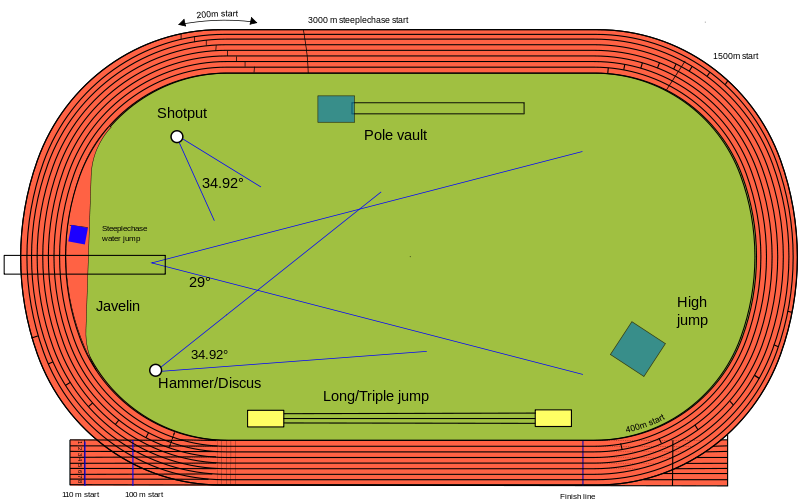Athletics
by Beáta Vári
Dear Readers,
The aims and objectives of this study are to enhance and enrich your knowledge and equip you with new skills and competences. Our intention was to design practice based exercises and work-outs. The skills that you already possess will be needed to have a wider overview of athletics and understand the latest theories that have been developed and introduced into practice in the past few decades.
We are aware of the fact that many books and materials have already been published therefore we have decided to offer you materials that provide you with basic knowledge as well as complicated techniques and methods. Athletics can be practised outdoors but often the absence of adequate tracks confronts trainers and professionals with lots of problems. There are many activities that have been designed for ideal athletic tracks but most schools do not have such ideal places. Naturally it should not mean to neglect these types of physical activities from our education. Each professional is suggested finding ways and techniques to make students understand the essence of athletics and PE classes should not be limited to develop only general condition and fitness. Our study offers workouts that can be practised either indoors or outdoors. The focus is also on raising attention to competitions with lots of games and home championships organised by schools. These opportunities support professionals to recognize talents and send them to coaches and instructors who could make these students become high achievers and develop their health related knowledge. In these competitions and games students can compare their skills with the others that may motivate them and enhance their self-esteem and competitive culture (being able to win and loose).
To be able to understand the importance of athletics it is worth having a wider range of knowledge about it…
The website of The Hungarian athletic Association: www.masz.hu
http://www.masz.hu/index.php?option=com_content&view=article&id=25&Itemid=28
Where are competitions organised?
Characteristics of outdoor track and field are the followings. The proper length for a competitive running track is 400 metre long with two straights and two curves; each section is 100 metre long. There are 8 or 9 lanes in the home-stretch and only eight in the other sections of a track. The length of indoor tracks is 200 meters with 4-5 runway tracks. Until the fifties the surface of stadiums was clay and wood panelling was used for indoor ones. Historically various forms of grass, sand and ciders were used. Since the sixties synthetic tracks have become fashionable. In Melbourne in 1956 plastic cover was already tried out. In 1938 Otto Bayer experimented with polyurethane that served the basis of synthetic tracks and originally it was conceived for horse racing. First APS it tested and it was found that it provided unique characteristics and at the same time it was appropriate for athletes’ safety in different weather. In the sixties tracks were covered with rubber in most North American collages. It was in the Mexican Olympic Games when plastic track surface was constructed and used in 1968. In Europe the German GMBH invented and produced the first plastic – rubber running track for the Munich Olympics and it is still licensed worldwide. In Hungary it is known as rectoran. The American APS produces plaid pattern rectoran surfaces. Start of a race is marked by a white line 5cm wide. In all races that are not run in lanes the start line must be curved, so that all the athletes start the same distance from the finish. Starting blocks may be used for all races up to 400 m. Races start by the report of the starter after she/he has ascertained that athletes are steady and in the correct starting position. The finishing position of athletes is determined by the order in which any part of their torso reaches the vertical plane of the nearer edge of the finish line. Fully automatic systems, photo timing, are becoming more common. To enhance athletes’ achievement and avoid sport injuries special athletic shoes are used and they have been tailored for different purposes of use. The so called spiked shoes have been developed for runners. Running shoes come in a range of shapes suited to different running styles. In case of bend running the outer and inner track lanes have their advantages and disadvantages. It is easier to run in the outer lane, but runners cannot see the other athletes.

A typical layout of an outdoor track and field stadium
Competition Rules of the Hungarian Athletic Association: http://www.masz.hu/images/stories/pdf-anyagok/szabalyzatok/versenyszab.pdf
After discussing briefly what we should mean by running and sprinting we will turn to discuss the most frequent practices, workouts and dynamic warm up drill in PE classes. Sprints, jumps and throws will be dealt with in depth.